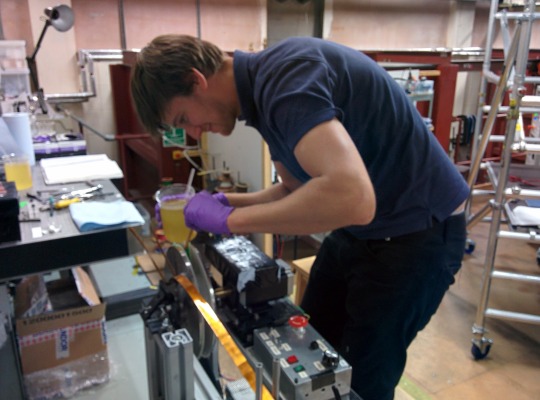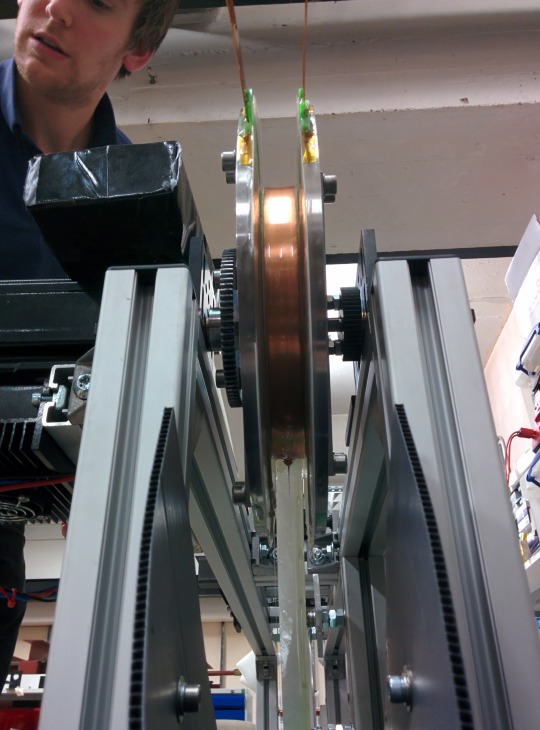My colleague Guy Burdiak has been working on making magnets for MAGPIE since I arrived at Imperial College, and yesterday I had a chance to help him out with the final winding process.

Adding magnetic fields to plasma physics experiments can fundamentally alter how the plasma responds. This is because plasmas are made from charged particles which are strongly affected by electromagnetic forces. To add a large magnetic field to our experiments on MAGPIE, Guy designed a magnetic coil made from a spiral of copper ribbon wrapped around a stainless steel bobbin. Using a separate capacitor bank, a large electric current (~5 kA) will pass through the copper ribbon, creating a magnetic field of around 10 T.

The machinery to wind the coil is a work of art. The copper ribbon must be wound on under considerable tension using a stepper motor, using about weight of a small human, and this tension must be continuously monitored (using, quite neatly, the force meters from a bathroom scale…).

At the same time as winding on the copper, a layer of paper dipped in epoxy is wrapped between the copper layers to provide electrical insulation. This gloopy mixture is made up from two separate fluids, one labelled corrosive, and the other toxic. Lovely!

New epoxy is constantly poured over the bobbin to ensure it permeates the entire coil. The epoxy is an exothermic mixture that gets quiet hot, and it stinks of ammonia. The entire coil winding process took about five hours, so you can imagine how enjoyable that was.
After all of the copper is wound on, Guy wrapped twelve layers of epoxy impregnated Kevlar over the top. The forces on the magnet when a large current passes through it are phenomenal, equivalent to around 30 tonnes, and these magnets have a tendency to explode. The Kevlar is intended to stop that from happening, but we have no idea if it works yet. My advisor Sergey is in the background, keeping the Kevlar in line as it runs through under tension.

Magnetic fields don’t move instantaneously, and they take some time to permeate through metallic objects. To make sure the magnetic field has fully permeated our experimental setup before the experiment starts, the capacitor bank must deliver a large current for a long time. In MAGPIE, that means milliseconds – quiet short, but still ten thousand times longer than the experimental time scale! This means the capacitor bank must be able to contain a lot of energy to keep that current flowing, and it turns out that it has almost as much energy stored as all the capacitor banks in MAGPIE!
